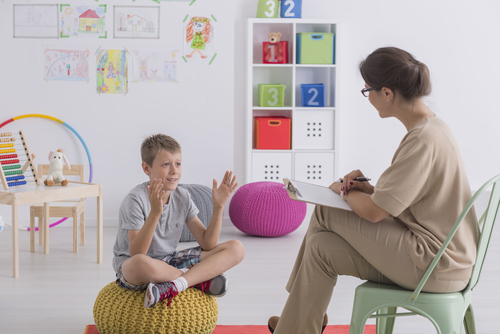EMDR Helps Children with PTSD Heal from the Past

Trauma is not something that we ever want for our children. Unfortunately, millions of children experience trauma at young ages. Either at the hands of their own parents or in a situation out of their parent's or guardian's control. An estimated 16% of children who experience a traumatic event in their lives will develop PTSD, post-traumatic stress disorder. Most people will experience trauma sometime in their childhood or adult lives. While living with varying symptoms of trauma is common, developing PTSD is less common. For children, however, whose brains are fragile and still developmentally vulnerable, the likelihood of developing PTSD is greater.
A common side effect of PTSD at any age is developing an issue with substance abuse. Characterized by intrusive thoughts, disruptive emotions, and an inability to self-regulate, children, adolescents, and teens with untreated PTSD are more likely to become addicted. Mental illness of any kind creates a higher likelihood of substance abuse. PTSD, which can include symptoms from many different kinds of mental health disorders, is especially prone. Finding relief in the euphoric effect of drugs and alcohol, the sensations provided by substance abuse hit a deeper emotional level of pleasure and reward. Young children and teens can be lead to believe that their PTSD is manageable when they are under the influence of mind altering substances.
Sending a loved child to treatment for substance use disorder should also include treatment for PTSD if they have been exposed to trauma. Clinically driven programs like the one offered at Stonewater Adolescent Recovery Center offer treatment methods like EMDR to treat trauma. Eye Movement Desensitization and Reprocessing was developed specifically to treat trauma. EMDR is effective in treating adult symptoms of trauma, some of which likely stemmed from childhood. In children, however, EMDR is also effective. A paper published in the
Journal of Child Psychology and Psychiatry
found that just a few hours of EMDR treatment can significantly improve the symptoms of PTSD in children.
Children between the ages of 8 to 18 were examined for the study. Researchers found that an average of just four sessions of EMDR work was sufficient to consider the treatment successful. EMDR helps the brain reprocess the traumatic experience, organizing the memories and creating new associations to the experience. Developing acceptance and understanding, children feel less inclined to run from the memories and escape through the use of substances.
Stonewater Adolescent Recovery Center offers an impressive clinical program of recovery for the treatment of adolescent and teenage boys. Our residential treatment programs help young men build a foundation of sobriety will cleansing their life in mind, body, and spirit. Call us today for information on our programs serving Mississippi and the rest of the south: 662-598-4214

.jpg)

